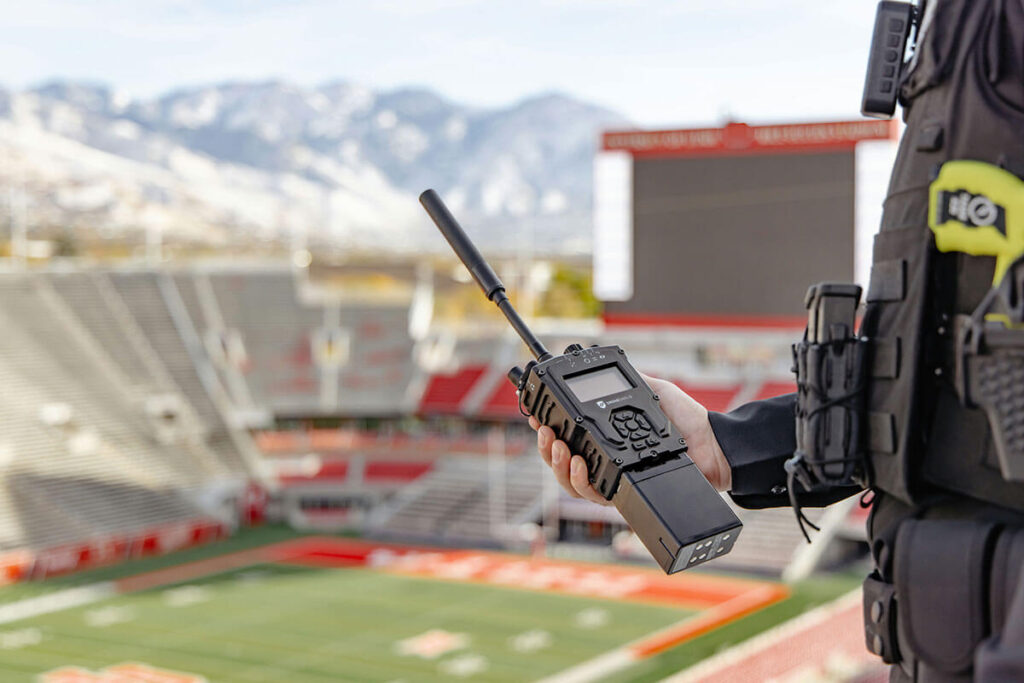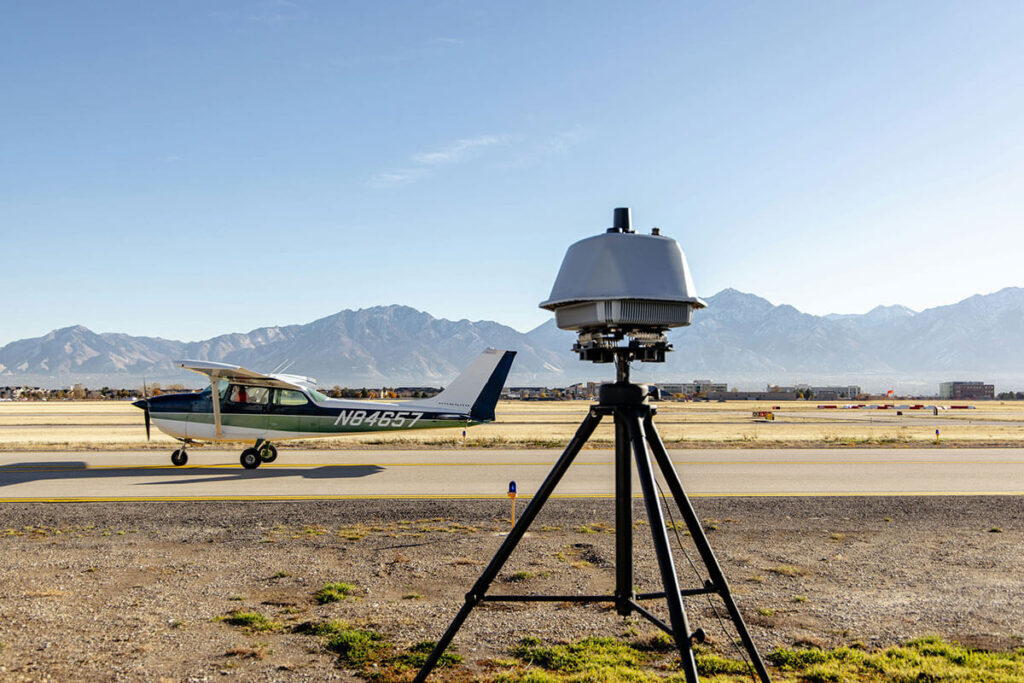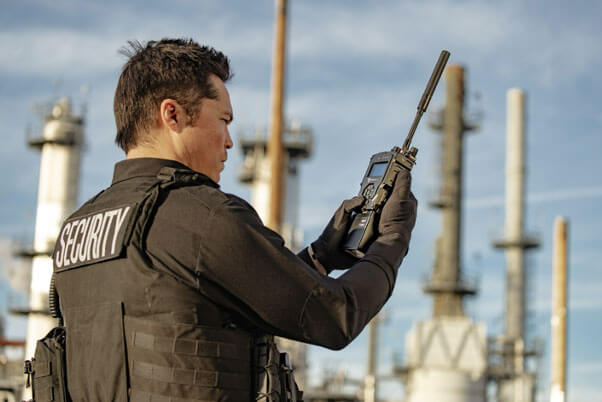In today’s security landscape, traditional physical security measures—gates, guards and guns—are no longer sufficient to protect critical infrastructure and public venues. With the proliferation of uncrewed aerial systems (UAS), a third dimension of security has emerged that demands a multi-layered approach including airspace awareness and protection.
Tom Adams, Director of Public Safety at DroneShield, brings a wealth of experience to this discussion. On a recent Dawn of Autonomy podcast, Adams walked us through his journey from FBI bomb technician to counter-UAS professional and offered valuable insights into the challenges and solutions in this emerging field.
Bringing FBI Experience to the Counter-Drone Industry
After 20 years in the FBI, Tom now maintains his dedication to public safety by focusing on counter-UAS technologies. His path began in the U.S. Army, followed by his role as an FBI special agent bomb technician. Adams’ pursuit of a master’s in unmanned systems from Embry-Riddle sparked his interest in counter-drone technology.
In the FBI, Adams spent three years on the agency’s counter-UAS team, protecting large public venues and high-profile events throughout the United States. This experience came shortly after the Department of Justice and Department of Homeland Security received their authorities for counter-drone operations.
After retiring from the FBI over two years ago, Adams entered the industry to continue contributing his operational experience and perspective. He initially co-founded AeroVigilance and co-architected the popular C-UAS Hub website before joining DroneShield, where he now leads the company’s public safety initiatives in the United States.

The Evolving Drone Threat Landscape
The UAS threat isn’t new – security experts have been discussing it for decades. However, what has changed dramatically is the accessibility and capability of UAS technology, which creates new security challenges that traditional approaches simply can’t address.
The democratization of aerial capabilities means that threats can come from various actors, from small splinter groups to nation-states. The range of potential threats is vast, from surveillance and intelligence gathering to weapons delivery and drone-based cyber attacks.
This evolution means that traditional security approaches focused on perimeter protection no longer suffice. As Adams aptly put it: “The gates, guns, and guards are no longer the primary way in which you protect a facility. We now have to worry about that third dimension—what’s going on in the airspace around us.”
Airspace Awareness vs. Counter-UAS
Terminology matters in this evolving field. Adams has been an advocate for using the term “airspace awareness and protection” rather than just “counter-UAS” to better describe the comprehensive approach required.
This broader perspective is crucial because misidentification is a common issue. Adams candidly admits that during his FBI career, he “may have chased a few drones around the country…suspected blinking lights in the sky” only to discover they were celestial bodies, low-Earth orbit satellites or other aircraft.
This was clearly demonstrated during what many now refer to as “New Jersey drone gate,” when multiple drone sightings were reported near critical infrastructure. Many of these sightings turned out to be misidentifications. Part of the problem in Jersey, and generally, is a lack of education around UAS and C-UAS technologies. According to Adams, busting some of those myths can help start building a solid foundation of understanding.
Myths and Misconceptions About Counter-Drone Operations
Several myths pervade discussions about counter-UAS solutions. Adams identified and elaborated on three key misconceptions:
Myth 1: One-Size-Fits-All Solutions Exist
Many people assume there’s a single technology that can solve all drone detection and mitigation challenges. Adams emphasized that this simply isn’t true.
Different drones navigate airspace in different ways, which dictates the types of detection and mitigation technologies needed. Some drones operate via radio frequency (RF), while others might be on autonomous waypoint missions or even fly via fiber optic cables, as seen in Ukraine. There is no one-size-fits-all solution.
Myth 2: Remote ID Is the Complete Solution
Remote Identification (Remote ID), a system where drones broadcast identification and location information, is not a complete solution for drone security.
Adams cautioned that it should be considered just one data point among many – and a potentially incomplete one at that. A few reasons why include that the signal range may be limited and not all drones will comply with broadcasting requirements.
Other critical factors Adams highlighted include the drone’s flight path, whether it’s carrying a payload, if it’s flying in restricted airspace or over critical infrastructure and whether it’s endangering people.
Myth 3: Counter-Drone Operations Are Only for the Military
“One of the big mistakes, because we associate this (C-UAS) mission with the military, is that it’s really complex and very difficult to learn, or the equipment is really difficult to operate. And that’s not necessarily the case,” Adams said.
At DroneShield, Adams emphasized the company’s philosophy of “counter-UAS simplified” – offering systems that public safety and critical infrastructure personnel can learn to use quickly.

DroneShield’s Counter-UAS Solutions
DroneShield offers a range of modular, scalable solutions designed for various counter-drone applications, from handheld devices to integrated fixed-site systems.
Portable RF Detection: The RfPatrol
One of DroneShield’s core offerings is the RF Patrol, a handheld RF detection system that covers a wide range of frequencies. Users can employ this versatile tool for various missions, including executive protection, stadium security and critical infrastructure protection.
“What’s nice about these is you can use them by themselves. We can push the data to a tablet, to a laptop or we can push it to a lighter version of our command and control system called C2 Tactical,” Adams said.
The RF Patrol can also be integrated with larger fixed-site systems. This allows for data fusion from multiple sources. A security vehicle equipped with RF Patrol can fill detection gaps in a larger system’s coverage area.
The DroneSentry-X Mk2
The DroneSentry-X Mk2 comes in two versions: a detect-only version that can identify a wide range of frequencies and provide line-of-bearing information, and a detect-and-defeat version that adds jamming capabilities for specific drone frequencies.
“There’s a little bit of scalability and flexibility in there,” Adams noted. “What’s nice about those is you can really set exactly what frequencies you want to spend time detecting. So there’s a lot of flexibility within the system itself, depending on what your mission use case is and what you’re trying to achieve with your security goals.”
The DroneGun Mk4
For direct intervention against rogue drones, DroneShield offers the DroneGun Mk4, a handheld directional RF jammer capable of interrupting communications between the ground control station (GCS) and the drone across a wide range of common drone frequencies.
“It’s a great tool to have. It’s used by a lot of security and military forces worldwide. It’s very packable and portable,” Adams explained.
DroneShield designed the DroneGun with familiar ergonomics for those with military or law enforcement backgrounds. It features controls similar to an M4 rifle. This makes it intuitive to operate with only minimal training.
The Features that Set This Tech Apart
All of these different systems contain certain characteristics that make them best-in-class. From flexibility and ease of use, interoperability and the software “brains” that control them, DroneShield has put extra attention on the things that matter for counter-UAS professionals.
- Adaptability and Deployment Speed: A key advantage of DroneShield’s systems is their adaptability and rapid deployment capability. Some of the company’s expeditionary kits can be set up in under ten minutes, and many components can be quickly reconfigured for different mission profiles.
- Multi-Sensor Integration and System Compatibility: DroneShield emphasizes compatibility and integration. Its systems work with other industry partners’ solutions, to create comprehensive detection and mitigation systems.
- The Software Behind the Hardware: While the physical components of counter-drone systems are visible and tangible, the software that powers them is equally important. DroneShield invests heavily in software development to keep their systems current and effective against evolving threats.
- Tailoring Solutions to Unique Environments: One of the challenges in counter-drone security is that every environment has unique characteristics and requirements. DroneShield works closely with customers to understand their specific needs and develop customized solutions. This might involve integrating third-party hardware or software to address particular challenges or threats.
Leveraging Technology, Training and Expertise in Counter-UAS Operations
In closing, Adams highlighted that C-UAS professionals must balance technology adoption with the critical need for education and training. The human element will always remain essential to effective airspace security programs.
Beyond Technology: The Human Component
While cutting-edge technology forms the foundation of counter-drone operations, Adams stressed that equipment alone isn’t enough to create an effective security program.
“You need to have the right equipment, but you also need to have the right capabilities, the right training, the right teams that are working together,” Adams explained. “Those policies and procedures, those concepts of operations, are probably just as important as the equipment.”
DroneShield addresses the training need through comprehensive programs that go beyond simply operating equipment. They advise customers how to develop effective standard operating procedures and coordinate counter-drone operations across organizations.
The Regulatory Landscape
Understanding the legal framework governing counter-drone operations is another essential aspect of successful implementation. In the U.S., counter-drone authorities are limited to specific federal agencies and contexts.
However, Adams emphasized that even without mitigation authority, organizations can significantly enhance their security posture through detection and awareness capabilities.
“Even though you might not have the authority to do mitigation right now, that doesn’t mean you can’t have a really effective awareness program,” he explains. “You can build awareness programs with detection technology so that you have a really good idea of what is flying in your area.”
Final Deep Thoughts: Sharing is Caring
To keep up with the UAS threat, organizations across military, law enforcement, and infrastructure sectors must prioritize ongoing learning to make informed decisions. Adams encouraged all stakeholders to educate themselves on drones and counter-drone first and foremost.
“There are a lot of complexities to this,” Adams concluded, “but if you can start to eat this elephant one bite at a time.” He recommended starting out by educating yourself with some great guides, references, and textbooks – before you start to talk to vendors.
DroneShield not only offers these kinds of training and resources – as well as the systems C-UAS professionals need – they rely on the operational bone fides of seasoned professionals like Adams, who continues to share his knowledge and wisdom across the industry. And we all benefit from that.
Key UAS Threat Factors:
- Low-cost, easy-to-fly drones
- Diverse threat actors (from small groups to nation-states)
- Wide range of potential uses (surveillance, weapons delivery, cyber attacks)
C-UAS Challenges
- Crowded airspace with legitimate and potentially malicious users
- Difficulty in threat assessment and response
- Need for new security strategies to address aerial threats
By: Dawn Zoldi (Colonel, USAF Ret.)

